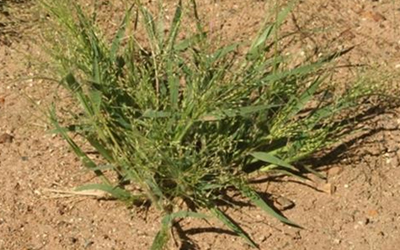Toxic summer weeds
Dr Jeff Cave, Senior Veterinary Officer, Agriculture Victoria.
Every season has its own toxic plant risks. Most issues with toxic weeds follow summer rain and are especially seen in sheep grazing stubbles. Since all animals are co-grazing the same pastures, toxic weeds can affect a large portion of the flock.
Heliotrope
Heliotrope is most often seen in stubbles and pastures with bare ground following summer rain. It is relatively unpalatable, but sheep will eat it if they must. Heliotrope contains a toxin known as a pyrrolizidine alkaloid that damages the liver. The damage is cumulative each time heliotrope is eaten. Paterson’s Curse contains the same toxin. The damage caused affects the animal’s liver’s ability to metabolise copper. Later, in a following spring, when sheep have access to lush, clover rich pastures, which contain high levels of copper, their liver becomes saturated with copper. This can lead to liver and kidney failure and the condition known as 'yellows', which is the clinical sign of jaundice due to liver failure.

Hairy panic
Hairy panic can appear to be a good source of green feed in summer. However, in young sheep it can cause liver damage due to saponins, which form crystals in the liver, blocking the flow of bile. Caltrop can do a similar thing. As a result of the loss of liver function, affected lambs develop jaundice seen as 'yellow' and photosensitisation seen as severe sunburn or swelling on exposed areas like the ears and face. Sometimes the condition is known as 'yellow bighead'.
There are many other toxic plants, and plants that may become toxic given a particular set of environmental conditions. It is always best to seek veterinary advice if you are concerned about the possibility of plant toxicities.
